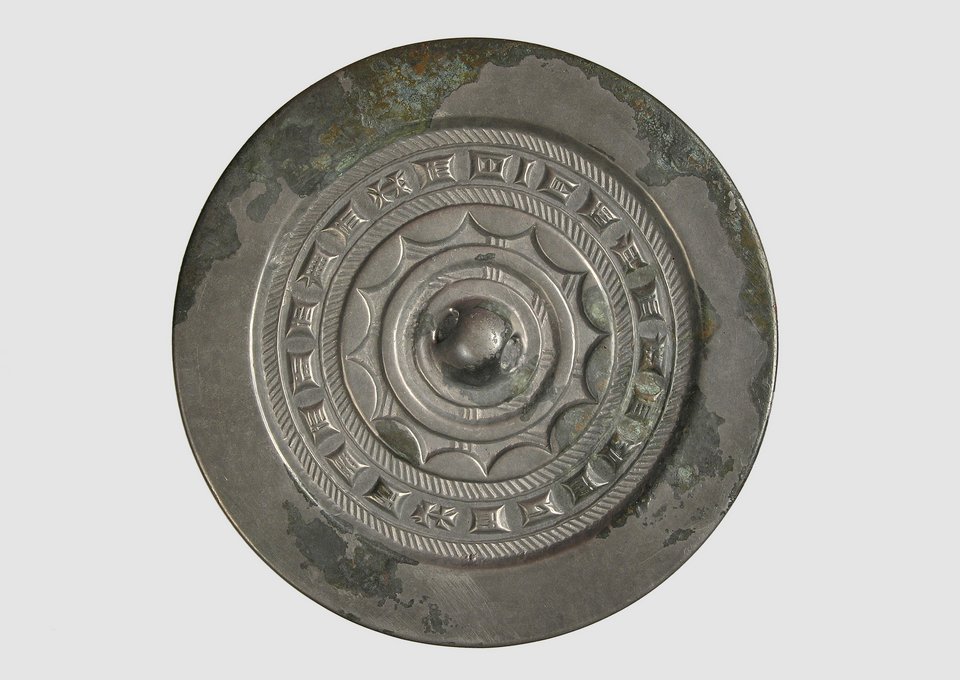This is a round mirror with a wide, thickened edge and a round loop-cone in the center. Along the edge there is an inscription in Chinese in the Xuzhuang style: "The inner side (of the mirror) is clean, and therefore (it) reflects light; (its) (shine) resembles the sun and the moon." The mirror is cast from so-called white bronze (40.4% copper, 25.4% zinc, 31.6% nickel, 2.6% iron). It is of Chinese origin, where such mirrors were mass-produced at the end of the Western Han era in the 1st century BCE – at the beginning of the 1st century CE.
Similar Chinese bronze mirrors and their replicas are quite common in Sarmatian burials. It is interesting that in Sarmatian burials they are usually "late" and one and a half to two centuries older than their owners. Some researchers attribute this to waves of migration of nomads who gradually migrated westward over the centuries, passing on similar items as a legacy; some with the operation of the Silk Road, thanks to which things out of fashion in China were sold to distant barbarians.
The owner of this mirror used it not only for its intended purpose, but also performed some magical function.
en

